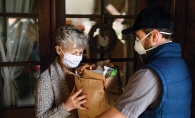In 2010, Steve Hall embarked on a three-week trip to Kenya and Uganda. There, he witnessed a tragedy. Those he met along the way had no access to a vital resource that so many Americans take for granted: water.
Steve’s educational visit stemmed from his mother Patty’s mission. In 2007, Patty Hall founded H20 for Life, an organization that aims to diminish the global water crisis by raising funds and awareness through service-learning opportunities in schools, for youth groups and faith-based organizations. The group partners with nongovernmental organizations (NGOs) that, in turn, adhere to WASH (water, sanitation and hygiene) initiatives by creating borehole wells, hand-washing stations, rainwater catchment tanks and latrines in developing countries. As the director for school programs at H2O for Life, Steve explains this all-encompassing aspect is vital. Studies have shown that if all three components aren’t represented, it doesn’t solve the problem, he says.
HOW IT BEGAN
In the early 2000s, Patty, then a teacher at Highview Middle School in New Brighton, traveled several times to Kenya to help build health centers and contribute medical supplies to clinics. She formed a friendship with her driver, and on a trip in 2006, he asked for her help for a water-based project in Kathungu Village. That school year, Highview raised over $13,000 through fundraising events, and to this day, the village has water year-round.
Patty never imagined the project would expand beyond Highview, but it did. The founder of Water Advocates, a grassroots network based in Washington state that emerged from Citizens for Healthy Families, challenged Patty to find 10 schools interested in becoming involved. In its first school year, 2007–2008, 16 schools participated in an H20 for Life project.
HOW IT WORKS
Two million hours are wasted daily on fetching water in developing countries. To eliminate this issue, H20 for Life encourages schools and youth groups in the United States to help fund a project, no matter the price, for a partner school in a developing country. Schools do not pay for the partnership, and grants and volunteers fund the nonprofit. Each school starts a blog and posts photographs of the progress. Whether it raises $100 or $10,000, every bit counts. “We don’t care how much money you raise; that’s not really what it is about,” says Nick Coughlin, director of communications.
HOW IT HELPS
H20 for Life not only sets out to help a worthy cause, but it connects its participants in a unique way. “It’s the connection we are able to make between the U.S. youth and the youth in other areas,” says Steve Hall. “It makes a huge difference that kids here are able to put a name and face to [the people] they are supporting.”
Gary Woeltge, executive director, joined the organization because of the impact it has on kids here. “They get to travel there visually,” he says. “I think it changes kids in ways they can’t change unless they experience that connection.”
The most popular fundraising event is the Walk for Water, which challenges students to carry one gallon buckets of water and to pledge how many laps they can accomplish. “so they can get the feel of carrying large amounts of water for long distances,” says Steve.
Ben Butters, a physical education teacher at Matoska International IB World School, has partnered with H20 for Life. His classes’ activities included turning off the water fountains during gym hour and raising money with reusable water bottles. They also raised more than $5,000 for a Guatemalan school. “Most kids love to help, no matter what it is,” says Butters. This year, Butters is stepping back and allowing his students to take the reins.
Patty agrees with Butters. “As a teacher, I truly believe in youth engagement,” she says. “It changed our entire school climate; it’s a powerful tool.”
To learn more about how you can join H20 for Life’s efforts, visit h2oforlifeschools.org. You can also read testimonials and tips, follow a school’s progress and donate.
Facts of the Global Water Crisis
• Every 20 seconds a child perishes from a lack of access to purified water.
• Women and children in many developing countries spend up to 60 percent of their day collecting water.
• 4,500 children die each day because of unsafe water and a lack of sanitation.









